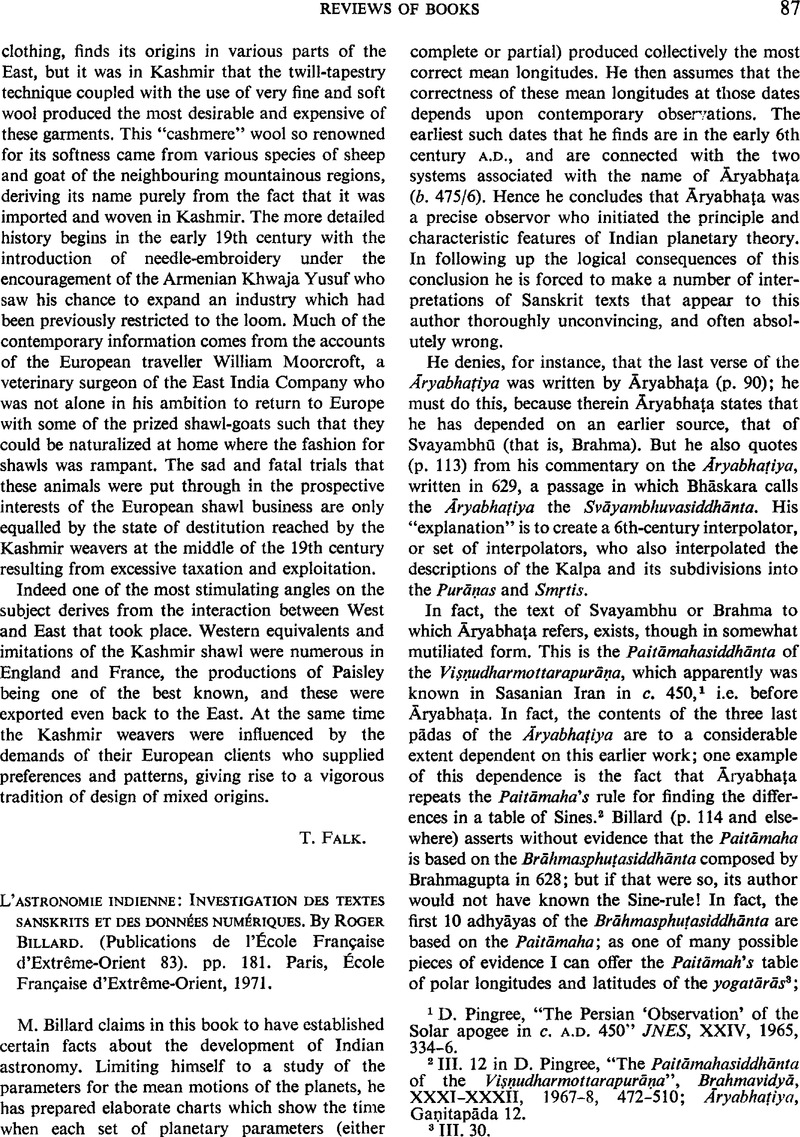No CrossRef data available.
Published online by Cambridge University Press: 15 March 2011

1 Pingree, D., “The Persian ‘Observation’ of the Solar apogee in c. A.D. 450” JNES, XXIV, 1965, 334–336.Google Scholar
2 III. 12 in Pingree, D., “The Paitāmahasiddhānta of the Viṣṇudharmottarapurāṇa”, Brahmavidyā, XXXI–XXXII, 1967–1968, 472–510Google Scholar; Āryabhaṭiya, Gaṇitapāda 12.
3 III. 30.
4 Brāhmasphuṭasiddhānta, X. 1–7.
5 Brāhmasphuṭasiddhānta, X. 8–9.
6 Pingree, D., “Astronomy and astrology in India and Iran”, Isis, LIV, 1963, 229–246.CrossRefGoogle Scholar
7 Brāhmasphuṭasiddhānta, I. 9, and XI. 4–6 and 10–11.
8 Āryabhaṭiya, I. 7.
9 Pingree, D., “On the Greek origin of the Indian planetary model employing a double epicycle”, JHA, II, 1971, 80–95Google Scholar, and “Concentric with equant”, AIHS, XXIV, 1974, 26–29.Google Scholar
10 In particular, the evident use of analemmas by the Indians to solve problems in spherical trigonometry appears to go back to the Hellenistic tradition exemplified by Vitruvius, , De architectura, IX, 7–8.Google Scholar
11 In particular, the methods of calculating parallax that first appear in Sanskrit in the Romakasiddhānta (Pañcasiddhāntikā, VIII) and in the Pauliśasiddhānta (Pañcasiddhāntikā, VII) are strikingly Greek in conception, though, as presented by Varāhamihira, Indian in articulation.